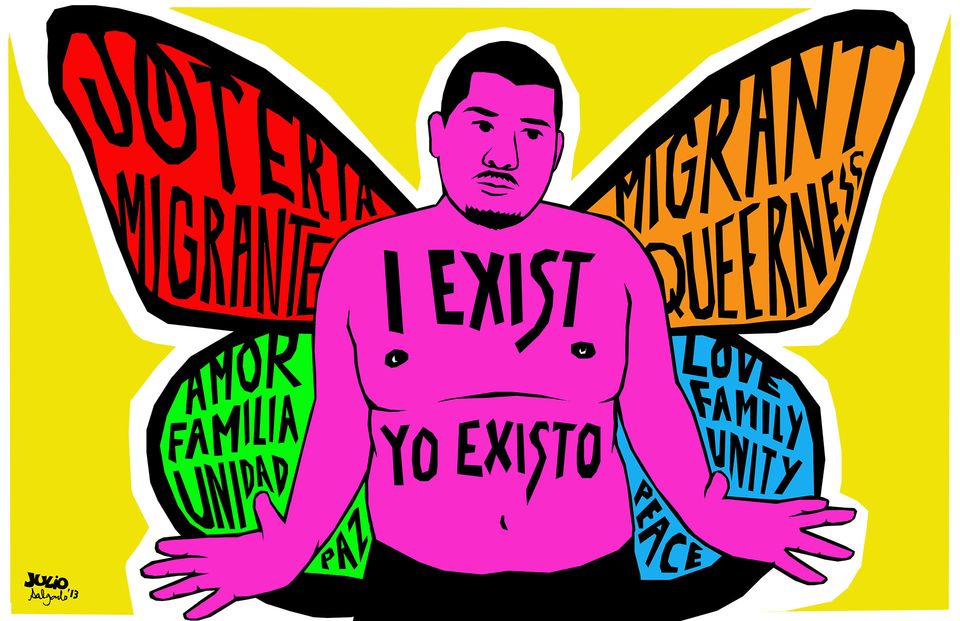Radical Histories: Chicano Prints from the Smithsonian American Art Museum

Julio Salgado, Queer Butterfly: I Exist, 2019, inkjet print on paper, Smithsonian American Art Museum, Museum purchase through the Lichtenberg Family Foundation, 2020.37.5, © 2020, Julio Salgado
Since the 1960s, Chicano artists have used printmaking as an effective means of disseminating images that promoted political advocacy, cross-cultural solidarity, and historical reflection. Radical Histories concentrates on their desire and determination to reconsider American history by creating graphic counter-histories from ancient to contemporary.
Description
Radical Histories: Chicano Prints from the Smithsonian American Art Museum features 60 works drawn from SAAM’s collection of Latino art, one of the leading national collections of its kind. The exhibition includes work by more than 40 artists and collectives including Lalo Alcaraz, Yreina D. Cervántez, Dignidad Rebelde (Jesus Barraza and Melanie Cervantes), Juan Fuentes, Rupert García, Ester Hernandez, Luis Jiménez, Alma Lopez, Yolanda López, Malaquias Montoya, Royal Chicano Air Force, among others. An extension of SAAM’s first exhibition on the subject, the landmark ¡Printing the Revolution! The Rise and Impact of Chicano Graphics, 1965 to Now, Radical Histories concentrates on Chicano artists’ efforts to assert multiple views of American history.
Artists featured in Radical Histories created graphic counter-histories—from ancient to contemporary times—posing questions regarding American identity, sexuality, race and ethnicity, and borders. These Chicano printmakers educated and agitated the public by presenting political and social themes as declarations of political advocacy and manifestations of cross-cultural solidarity. They also used political graphics to galvanize community support around issues of labor equality, supporting the farm workers’ movements of California and Texas by creating vivid images informed by satire, Pop Art, and Conceptualism. Moreover, they drew upon established traditions such as Mexican codices, reimagined popular calendar formats, and produced elaborate multilingual event posters to promote political action and heighten awareness of anti-war and pro-peace movements. Recurring subjects include immigration and the borderlands.
The exhibition also explores commemorative portraiture. Using photographs as references, Chicano artists resurrected and memorialized unknown and underrepresented artists and historical figures, offering overdue recognition to many individuals of color for their important contributions to society. Highlighting the importance of language in Chicano graphics, Radical Histories also examines the interplay between text and image, the artistic deployment of poetry, graffiti, and historical quotations, among other literary devices, to communicate with the public.
Radical Histories was organized by Claudia Zapata, former curatorial assistant for Latinx art at the Smithsonian American Art Museum.
Visiting Information
Tour Schedule
Credit
Radical Histories: Chicano Prints from the Smithsonian American Art Museum is organized by the Smithsonian American Art Museum.













